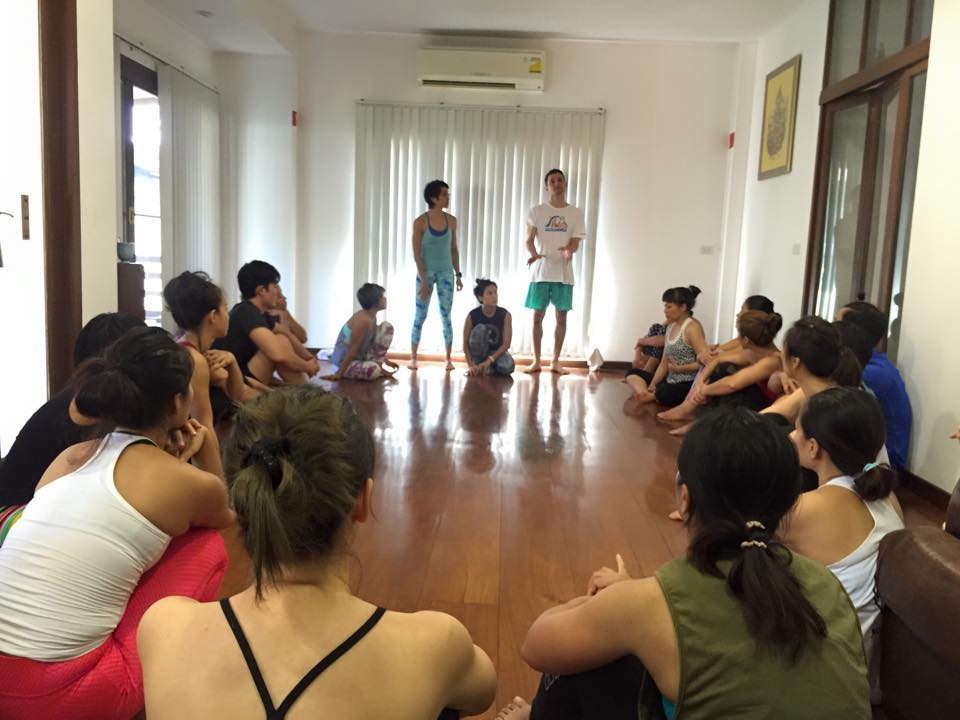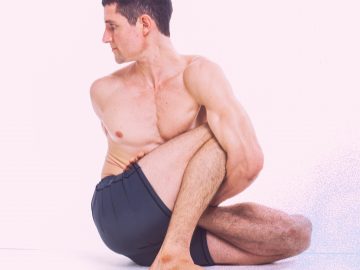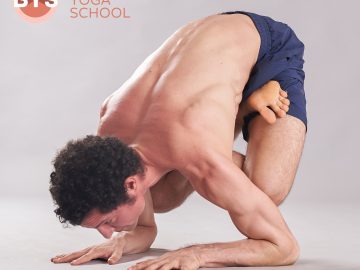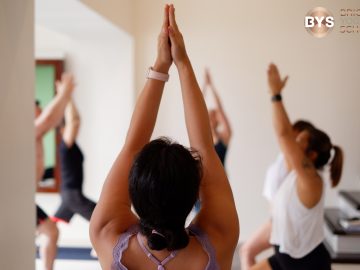After almost 10 years of practice and having led Yoga Teacher Trainings over the last 5 years, I would like to share some of the things that I have repeatedly been observing through the countless hours of practice and training with yogis and yoginis from all over the world who come to join us to deepen and strengthen their yoga practice. I, together with my partner, Joy, are committed in sharing our love and knowledge of yoga, always leading our Teacher Trainings with the intention to support our students to help them truly understand their practice on a deeper level, and to help them build up a good foundation on how to teach yoga. Through this, we, as well our students themselves, witness many amazing transformations during and after our Yoga Teacher Trainings – transformations not only on their bodies, but also in their minds.
We have seen a number of students walking into the course with injuries, insecurities, inhibitions, and self-doubt – some with hardly any skill in their own practice, more so any skill in leading a class as a teacher. But we have seen these same students walk out of our course with a lot of new knowledge and confidence to continue on their yoga journey, for some as practitioners for others also as yoga teachers.
We believe that a committed self-practice is what can truly support your teaching skills by helping you deepen your understanding of the practice, day in and day out, as you get on and off the yoga mat. It does not matter how many yoga courses or workshop because neither of those will bring you deep enough. It is only through self-practice that you can truly look within you to find your own truth, whatever that may be – this is a path that you will have to walk alone; your teacher is merely there to point you to the right direction. In other words, your teacher is there to guide you where to look, but it is up to you to seek what you are looking for.
Even after our students have finished their yoga teacher trainings with us, we make it a point to keep communicating with them. We are always try to be open to answer any questions they might have about the practice or about teaching, as we know that this yoga journey – both of practicing and teaching – is a constant journey, that continues more importantly even when you have stepped off of your yoga mat. In the same manner, we always encourage our graduated students to come back and revisit us in order to have a closer look into their practice so that we can do our best to address their questions. More than a single encounter, we want to nurture a more long-term relationship with our students, and this is the kind of teacher-student connection we want to encourage our students to have with their students, as well.
Our yoga teacher training is a great starting point in delving deeper into the practice of yoga. Our students are able to experience deep transformations through 24 intensive days of daily learning and practice, which undoubtedly opens them to look into and reach a deeper part of themselves.
One of the things we offer during our course that reinforces the process and practice of mindfulness is meditation practice, specifically Vipassana Meditation. This type of meditation allows students to better understand their practice, and, if necessary, adjust their approach towards the practice. Asana practice, while it is a vital part of our teacher trainings, is just one limb of the true essence of yoga. The physical postures are not the most important aspect of the practice; they are merely powerful tools we can use to transform not only our bodies, but also our minds, which, in turn, will inevitably change our perspectives, our relationships, and the overall quality of our daily lives.
This is what we believe, and this is what and how we teach. My teacher, Larry Schultz, used to say, “Teach what you practice, and practice what you teach.” Since the day he taught this to us, it has been how we approached the yoga practice and life itself.



